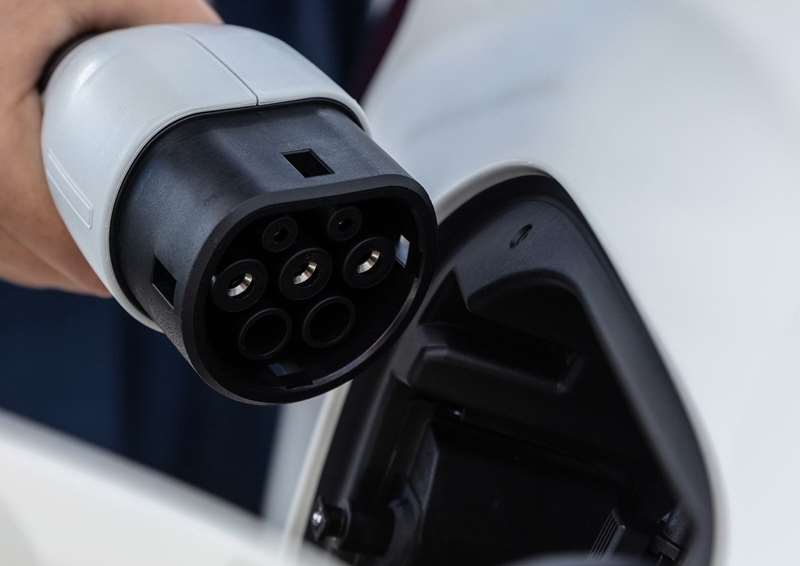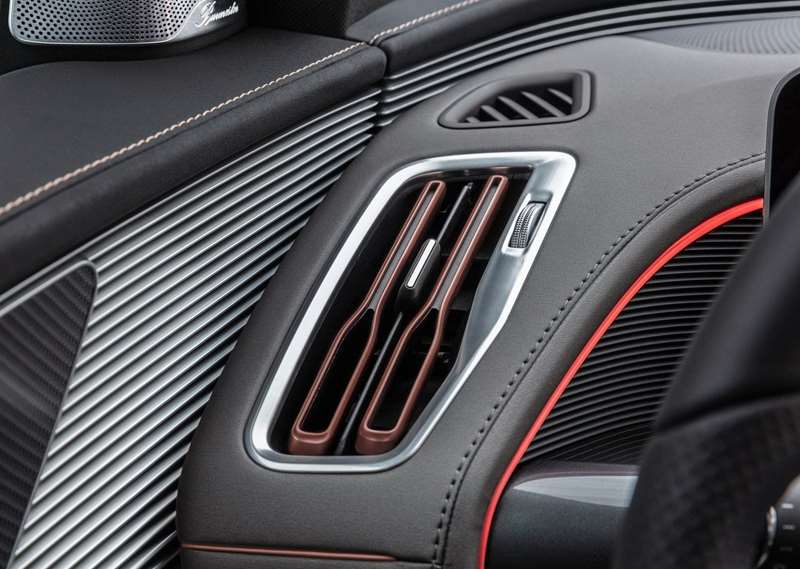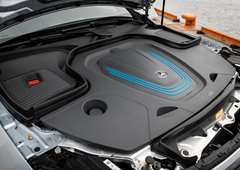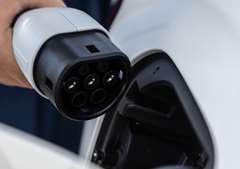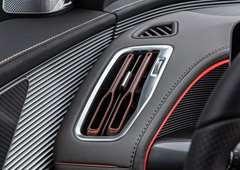Tesla may be riding high on the stock markets, but vehicles to rival its EV ambitions are arriving at pace. They include Mercedes-Benz’s new EQC, which David Thomson has just taken on his longest all electric journey.
What’s new?
My EV motoring started back in 2011 with a Dunedin-Mosgiel run in the diminutive Mitsubishi iMiEV, followed in 2012 by a range-stretching return airport run in the Chevrolet Volt.
Then, in 2016, there was a nerve-wracking return trip to Palmerston ina Nissan Leaf. In 2018, it was to Invercargill and back in a Hyundai Kona EV, followed last year by trips into the Maniototo driving the Audi e-tron, and New Zealand’s current Car of the Year, the Jaguar i-Pace.
That taste, sampled over nine years, summarises the rapidly growing prowess of electric vehicles. From a super-small vehicle with a barely 40km range to a trio of SUVs capable of covering 250km or more on a single battery charge.
Mercedes-Benz may have come late to the party but is out to make its mark. The EQC 400 4Matic is not only an arch-rival to the Audi e-tron (not to mention the Jaguar i-Pace and Tesla Model X), but the harbinger of Mercedes’ EQ revolution — over the next three years, the German company’s electric global line-up will expand to 10 models.
The EQC is based on Mercedes’ GLC structural underpinnings rather than on a bespoke EV chassis, but it discards the GLC’s styling, interior and, crucially, its reliance on fossil fuel. Instead, it ispowered by an 80kWh lithium-ion battery pack, comprising 348 power cells located under the floor between the front and rear wheels. The battery drives two asynchronous electric motors, one mounted on a substantial alloy sub-frame under the bonnet to drive the front wheels, and the other at the rear. Together, these motors muster 300kW of power and a thumping 760Nm of torque.
A price tag of $142,900 for a standard EQC is competitive against the vehicle’s key rivals from Audi and Jaguar, and comparable to the 287kW/520Nm petrol-powered AMG 43 version of the GLC.
What comes as standard?
The EQC has all the luxury trimmings, including leather upholstery, heated power-operated multi-function seats, a power-operated tailgate, sunroof, wireless charging and dual-zone climate control.
Fully digital instrumentation is provided in Mercedes’ dual widescreen arrangement alongside the touchscreen interface for the latest MBUX Infotainment system. This includes a comprehensive voice command system, satellite navigation, smartphone integration, Mercedes’ own global connectivity system and a 13-speaker Burmester audio system.
Safety items comprise route-based speed adaptation for the active cruise control, and active steering, braking, lane-keeping assistance and blind spot monitoring. Other features include self-parking, and an audible warning system to alert pedestrians to the car’s approach.
The test car also carried $4100 of extras.
What’s it like to look at?
The EQC is conservatively but sleekly styled. Up front, the look of the assertive Mercedes-Benz nose is softened by the visual integration of the EQC’s multibeam LED headlights within a black grille surround. The tail is neatly executed, with a kick-up at its base, narrow light strip and a subtle rear wing.
The standard EQC specification for New Zealand includes an AMG-Line dress-up kit that provisions a front apron and rear diffuser along with 20-inch alloy wheels (replaced by optional 21-inch rims on the test car).
Blue EQC badging adorns the sides of the vehicle just forward of the front doors and is repeated, this time in chrome, at the rear.
What’s it like inside?
Because the EQC is based on a regular car platform rather than a purpose-designed EV chassis, the interior packaging is not nearly as radical as that of a Jaguar i-Pace or Tesla Model X.
Whether that is a good thing or not depends on one’s taste for the futuristic. Existing Mercedes owners migrating to EV ownership will likely be reassured by the high quality of fixtures and fittings and the familiarity of key displays and controls, noting of course that Mercedes’ MBUX infotainment interface is cutting edge in both its look and functionality.
Plush soft-touch surfacing abounds, the dash and centre console are uncluttered, and a special EQC look and feel is subtly introduced: the ribbed metallic inserts that carry across the dash and wrap around on to the doors are designed to mimic the heat sink fins on a piece of electronic equipment, while the vehicle’s rose-gold coloured air vents reference circuit boards.
The cabin is at its most spacious up front, where the driver and passenger are cossetted in supremely comfortable power-adjusting seats, separated by a wide console that incorporates a large centre bin as well as the main mouse-style MBUX controller and its associated buttons. In normal Mercedes fashion, the drive-shift is column-mounted.
There is decent room in the back, too, albeit sitting quite high due to the batteries under the floor, and with a transmission tunnel that is a legacy of the EQC’s conventional platform origins. Likewise compromised, the boot delivers a 500 litre standard capacity, which can be boosted via a split-folding rear seat arrangement that is activated electronically at the push of a button.
What’s it like to drive?
Refinement is the dynamic attribute that best captures the essence of the EQC. Even when its broad tyres are traversing coarsechip tarmac, road noise levels are very low. On smooth asphalt, the EQC wafts along in near-silence.
People not used to maximum torque from launch will be impressed, and initially shocked, by the EQC’s strong acceleration from low speeds.
Sport, comfort and eco drive modes, along with a customisable individual setting, are accessed via a burnished knob on the centre console. With an EV requiring no conventional gears, paddle shift controls, nestled behind the steering wheel, have been repurposed to provide five different levels of battery regeneration.
Drivesouth’s Dunedin-Christchurch sortie in the test car favoured comfort mode, generally with regeneration modes at the low end of the intervention scale. This was consistent with seeking to drive in an everyday manner, while also playingto the EQC’s refinement and performance strengths.
Interrupted only by a pause to recharge the battery in Timaru, the trip was fuss-free behind the wheel, with the sense of relaxed progress aided by the EQC’s adaptive cruise control.
Most impressive of all, however, was a trip around Christchurch’s relatively new western bypass dual carriageway, past the city’s airport and north. This involved a maximum refinement, minimal driver guidance approach while hands free at times to let lane keeping assist do its stuff, the route-based adaptive cruise slowing the car for corners and auto-dipping headlights adjusting to the traffic.
Around town motoring was also effortless, albeit within the usual constraints of size and rear visibility that are part-and-parcel of medium-to-large SUV motoring.
A modest 140mm of ground clearance underscores the EQC as lifestyle-focused rather than fully offroad-capable. All-wheel traction at least enables the skifield run, and will assist with towing, though restricted to a modest 1800kg braked.
Taking the EQC for a spirited back road blast reveals a reasonable amount of body-roll and an essentially surefooted and progressive nature. However, while its weight is quite well distributed, the EQC is a2.5-tonne machine set up to prioritise main road and around town comfort over handling finesse.
What about range?
Calculate a theoretical range based on its 80kWh battery and 21.4kWh/100km standard cycle efficiency return, and the EQC could be judged capable of covering close to 350km before its remaining range drops to 30km, at which point its systems put the vehicle into ‘‘emergency low-battery limp-home mode’’.
Covering the full 360km from Dunedin to Christchurch without a recharge was almost possible in theory. However,in the real world, considerations such as topography, traffic, the desire to maintain a brisk pace and the charge status of the vehicle not being at 100% to begin with had to be factored in.
That meant a stop at a 50kW rapid charger was required, and from the four possible options on or very close to State Highway 1 (Waimate, Timaru, Temuka or Ashburton), Timaru made the most sense. We paused there for an hour-long boost (and lunch) on the way north, and for a 30-minute top-up heading home.
In short, you can expect the real-world energy consumption of the EQC to range between 25kWh and 30kWh depending on the terrain and manner and speed of travel.
Verdict
Mercedes held back on joining the EV fray, but it has been worth the wait. Not only is the EQC an excellent all-electric vehicle, it feels every inch a true Mercedes-Benz.
Photos: David Thomson


